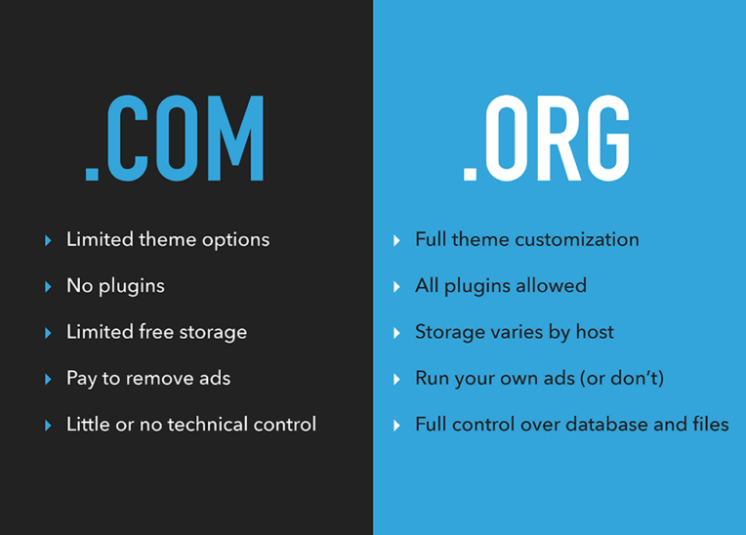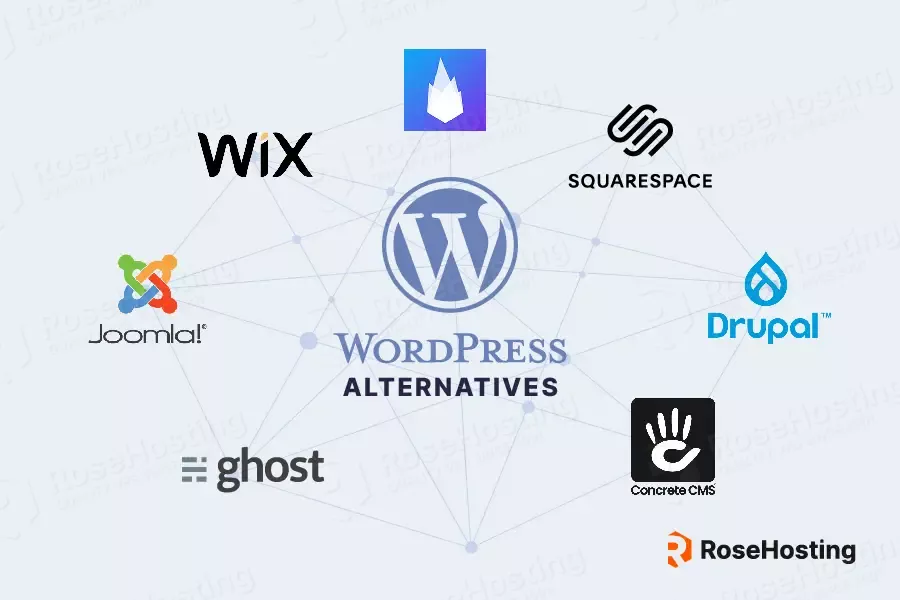When it comes to building a website, WordPress.com often stands at the top of the list for beginners and professionals alike. While WordPress.org gives you full control and customization options, WordPress.com is a hosted platform that aims to simplify the website-building experience. But how good is it really in 2025?
In this in-depth WordPress.com review, we’ll evaluate its strengths and weaknesses, compare it with other major platforms, and help you decide whether WordPress.com is the ideal choice for your goals—be it blogging, business, or ecommerce.

What is WordPress.com?
WordPress.com is a fully managed platform created by Automattic, the company behind WordPress itself. Unlike WordPress.org (which is self-hosted), WordPress.com handles the hosting, maintenance, security, and updates for you. This makes it incredibly appealing to beginners or anyone who wants to avoid the technical complexities of managing a website.
Users can choose from multiple plans—ranging from a free tier with basic functionality to premium and business plans that unlock greater customization, e-commerce tools, and plugins.
The Key Differences: WordPress.com vs WordPress.org
Before diving further, it’s important to clarify the difference:
- WordPress.org requires you to purchase your own hosting and domain, but you gain total control over customization, plugins, and monetization.
- WordPress.com is a closed ecosystem where hosting is provided, but customization (especially on lower-tier plans) is limited.
If you’re looking for simplicity and minimal maintenance, WordPress.com might be more suitable. If you want control and scalability, WordPress.org is better.
Who Is WordPress.com For?
WordPress.com is ideal for:
- Beginners who want to start a blog or personal website.
- Creators who prefer a no-maintenance, no-fuss experience.
- Small businesses looking for a reliable web presence without hiring developers.
- Non-profits, artists, or freelancers needing an online portfolio.
However, it may not be the best option for advanced marketers, developers, or large e-commerce businesses who need unrestricted access to plugins, themes, and server configurations.

Getting Started With WordPress.com
Signing up on WordPress.com is simple. Once you create an account, you’ll be prompted to choose your site’s purpose (blog, portfolio, store, etc.), and the platform will guide you through domain selection, theme setup, and content creation.
There’s no need to worry about manual installations or FTP uploads. Everything is managed via a clean dashboard with drag-and-drop tools and visual editors.
WordPress.com Pricing Breakdown
Here’s a look at the 2025 pricing structure (subject to change):
- Free Plan – Basic features, subdomain (yourname.wordpress.com), and limited storage.
- Personal Plan – Custom domain, email support, and removal of ads.
- Premium Plan – Advanced customization, CSS editing, monetization tools.
- Business Plan – Access to plugins, premium themes, Google Analytics, and 24/7 support.
- Commerce Plan – All Business features plus full eCommerce support.
Annual billing provides better rates. There’s also a 14-day refund window for paid plans.
Themes and Design Options
WordPress.com offers a library of both free and premium themes. While customization is limited on the free and personal plans, the Premium and Business tiers allow for deeper personalization, including CSS modifications.
Themes are mobile-responsive and modern in design. For those who want a more dynamic layout, block-based editing with the Site Editor is now available across most plans.
However, you won’t be able to upload custom third-party themes unless you’re on the Business or Commerce plans.
WordPress.com Editor: User Experience
The platform uses the WordPress Block Editor, also known as Gutenberg. This visual, block-based editor allows users to create layouts using content blocks like images, paragraphs, buttons, columns, and more.
It’s intuitive for beginners and powerful enough for experienced users. The real-time preview, autosave, and media embedding features streamline content creation.
However, the editor may still feel less refined than dedicated page builders like Elementor (available on WordPress.org) or Wix’s visual interface.
Performance and Uptime
WordPress.com websites are hosted on Automattic’s high-performance infrastructure, which offers:
- Consistent uptime (usually above 99.99%)
- Fast loading speeds (thanks to integrated CDN)
- Automatic backups and security patches
You don’t need to worry about managing server resources or installing updates—it’s all handled for you.
Plugin and Feature Access
One of the biggest limitations of WordPress.com (especially on lower plans) is the lack of access to third-party plugins. Only Business and Commerce plans allow full plugin installation.
However, WordPress.com offers built-in features that cover most essential needs:
- SEO tools
- Social media integration
- Basic forms
- Site stats and analytics
- E-commerce options (with WooCommerce integration on higher plans)
Still, for those wanting more customization, marketing automation, or unique functionality, WordPress.org with full plugin access remains superior.
Ecommerce Capabilities
Ecommerce is supported via the Commerce plan, which includes full WooCommerce integration. This allows you to:
- List and sell products or services
- Accept payments (Stripe, PayPal, etc.)
- Manage inventory and orders
- Add shipping options and tax settings
However, ecommerce features are not available on lower-tier plans. For serious online stores, you’re essentially locked into the higher price tier.
SEO, Analytics, and Marketing Tools
SEO settings on WordPress.com are available starting with the Premium plan. These include meta tags, sitemaps, social previews, and keyword suggestions.
Integration with Google Analytics is limited to the Business and Commerce plans, but WordPress.com also offers its own internal analytics dashboard with traffic stats, referrers, and click tracking.
Marketing integrations include Mailchimp, newsletters, and social sharing tools, although these are limited unless you upgrade.
Support and Community
Support options vary by plan:
- Free Plan: Community forums
- Personal & Premium: Email support
- Business & Commerce: 24/7 live chat
The platform also has a rich knowledge base, video tutorials, and active forums. While support is responsive, some users have reported delays during peak times.
Pros of WordPress.com
- Simple setup with no technical skills required
- Hosting, maintenance, and security are handled for you
- Free plan available to test the waters
- Wide selection of themes and built-in features
- Integration with WooCommerce for online stores
- Reliable performance and uptime
- Scalable with paid plans
Cons of WordPress.com
- Limited customization on lower plans
- No plugin uploads unless you’re on the Business or Commerce plans
- Theme uploads restricted
- Higher tiers can get expensive
- Less flexibility compared to self-hosted WordPress.org
WordPress.com vs Alternatives
- Wix: Better drag-and-drop editor, more beginner-friendly but less scalable.
- Squarespace: Excellent design templates, but limited plugin ecosystem.
- Weebly: Simple for small sites but less modern.
- Blogger/Google Sites: Minimal functionality, no real scalability.
WordPress.com sits in the middle ground—more powerful than basic builders, yet less flexible than WordPress.org.

Final Verdict: Is WordPress.com Worth It in 2025?
If you’re a beginner, freelancer, creative, or a small business owner who values ease-of-use, reliability, and minimal technical upkeep, WordPress.com is a fantastic option. It allows you to focus on creating content while the platform manages the backend.
However, if you require full control, extensive customization, plugin freedom, or wish to scale into a more complex site, you may outgrow WordPress.com fairly quickly.
Ultimately, WordPress.com remains one of the most polished platforms available today—but it works best when your needs align with its structure and pricing.
Pro Tip: If you’re still unsure, start with the free plan, explore the dashboard, and then upgrade only when necessary. That way, you’re not locked into a paid tier before deciding it’s the right fit.
Whether you choose WordPress.com or explore alternatives, clarity on your goals will lead you to the best platform.



